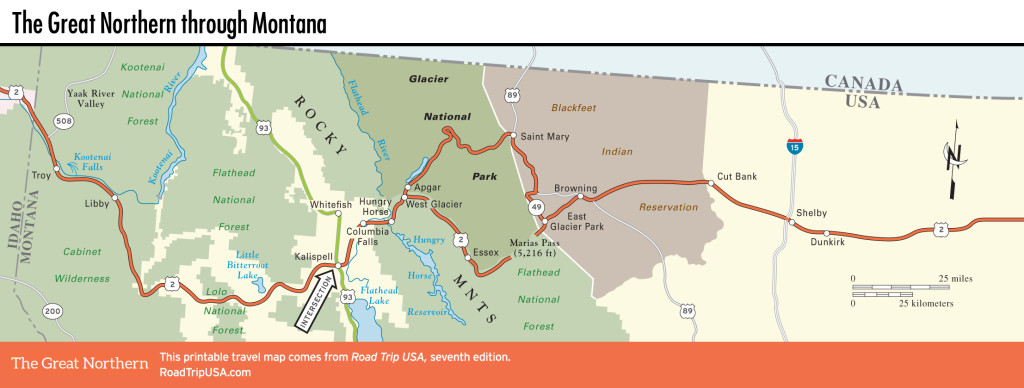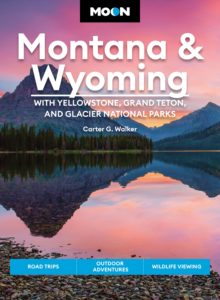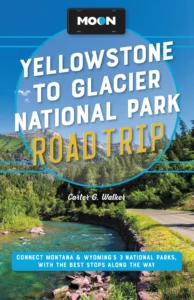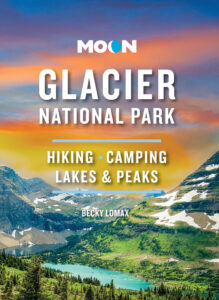Troy and Libby
Troy: Kootenai Falls
On the banks of the broad Kootenai (pronounced “KOOT-nee”) River, 14 mi (22.5 km) east of the Idaho border, the mining and lumber-milling town of Troy (pop. 904) is at nearly the state’s lowest elevation—1,892 ft (576 m) above sea level. There’s not a lot to the place, apart from a short stretch of motels, gas stations, taverns, churches, and cafés—the best of which is the family-friendly Silver Spur (13891 US-2, 406/295-2033), right in town—plus a small historical museum and visitor center at the east end of town. Some 7 mi (11.3 km) west of Troy, there’s a nice USFS campground at the confluence of the Yaak and Kootenai Rivers.
Though the only sign says simply Historic Point, the nicest spot to stop is 12 mi (19.3 km) west of Libby, 6 mi (9.6 km) east of Troy, where the thundering cascade of Kootenai Falls drops down a half-mile-long (0.8 km) series of terraces. Two hiking trails leave from the well-marked roadside parking area, one leading 400 yards upstream to the main falls, the other heading downstream to a rickety old swinging bridge that sways from cables suspended 50 ft (15 m) above the green water.
For most of the way between Troy and Libby, US-2 is bordered by marked turnouts where trails lead to the narrow, twisting old highway, preserved as a hiking and cross-country skiing trail through the dense forest.
Libby
The lumber town of Libby (pop. 2,737) was first founded as a gold-mining camp but grew into its present elongated form after the Great Northern Railway came through in 1892. On the south bank of the Kootenai River, Libby is just downstream from the Libby Dam, which was built in 1972 and forms the Lake Koocanusa Reservoir, stretching north into Canada. Libby has suffered one of the worst cases of long-term toxic pollution in recent U.S. history. From the 1940s up until 1990, mining company W. R. Grace dug millions of tons of asbestos-laced vermiculite rock out of a local mountain, covering Libby in toxic dust that has caused more than 1,200 people (almost half the current population) to suffer from serious lung diseases. The EPA has taken 20 years and spent more than $600 million to clean up Libby’s streets, gardens, and houses, and though company officials covered about half the costs, they were eventually cleared of all criminal charges.
Despite the occasional media interest in the asbestos case, Libby looks like a pretty typical Montana mountain town. Alongside the railroad tracks, Libby strings for a few miles along US-2 frontage, where you can find car washes and gas stations galore, plus a Subway, a Pizza Hut, and one good stop: the Last Straw Café (30890 US-2, 406/293-4000). A half dozen motels, including the Sandman Motel (31901 US-2, 406/293-8831, $69 and up) offer rooms. Off the highway north of US-2 toward Libby Dam, the old center of town holds more cafés, a microbrewery, and the Past Time Bar (216 Mineral Ave., 406/293-6097).
A number of pleasant campgrounds operate in and around Libby, including excellent spots in the nearby Cabinet Mountains Wilderness. Libby’s most interesting lodging option is spending a night or two in the Big Creek Baldy Lookout ($40), which is 25 mi (40 km) north of town. The popular lookout sleeps up to four people. Reservations can be made online at www.recreation.gov. For more info, contact the Libby ranger station (406/293-7773) or Kootenai National Forest (406/293-6211).
Between Libby and the busy mini metropolis of the Columbia Falls-Whitefish-Kalispell area, US-2 traverses 70 mi (113 km) of Kootenai National Forest, an all but uninhabited area, sections of which have been badly charred by forest fires. A small display at milepost 63 explains the role of fire in the natural scheme of things.

















